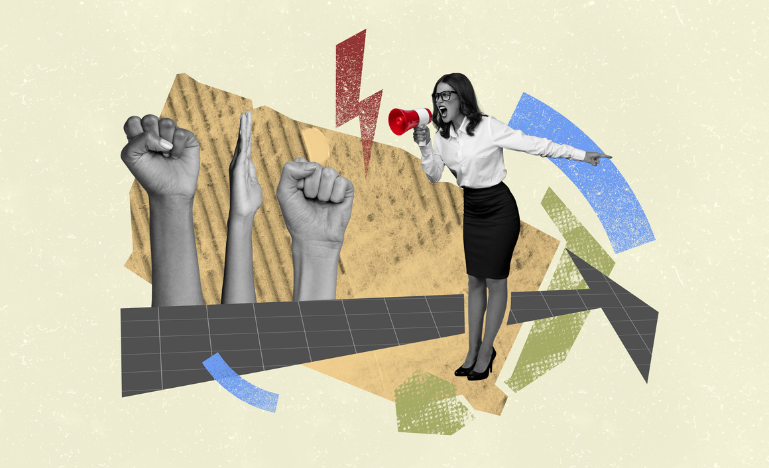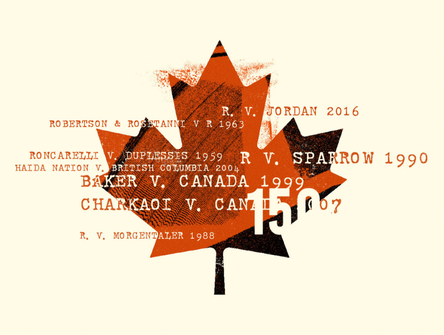Women who woke up the law
Season two of Verdicts and Voices kicks off with a look at the Canadian history-makers profiled in a new book by lawyer Karin Wells

Through remarkable courage and conviction, women have pushed Canadian law forward on everything from property rights, divorce, maternity leave and sexual assault.
There’s Eliza Campbell, who helped establish the act of separation, Chantale Daigle, who fought her ex-partner’s attempts to prevent her from having an abortion, and Jeannette Corbiere Lavell, who took on gendered discrimination in the Indian Act when she lost her First Nation status after marrying a non-Indigenous man.
They're among the history-makers profiled in the pages of Women Who Woke up the Law: Inside the Cases that Changed Women's Rights in Canada, a book by lawyer, documentarian and author Karin Wells published earlier this year.
In the first episode of season two of Verdicts and Voices, Wells joins host Alison Crawford to discuss how these women helped move the legal needle. Not surprisingly, the road to justice was slow and incremental for many of them.
“There's a consistency about these very tenacious women, most of whom were poor,” Wells says. “They were not fancy-pants, rich women who tend not to want to put their quarrels in public.”
These were women who were usually represented by legal aid or pro bono lawyers, and some of them actually lost their cases.
“That became the really interesting thing. They not only lost, but galvanized public opinion, often very reluctantly.”
One such case is that of Jane Hurshman, who was charged in 1982 with the murder of her violent and abusive husband, Billy Stafford.
“He was a foul, odious creature, just no way around it,” Wells says.
“The violence to which she was subjected was horrible, and to which her children were subjected … And one day, she just had enough.”
In 1982, Stafford was passed out drunk in the passenger seat of his pickup truck near their Nova Scotia home. He and Hurshman had gone out that night to play cards, and at some point, he threatened to douse the neighbour's trailer with gasoline and light a match to it.
Stafford also threatened to kill Hurshman’s son.
“She thought, yeah, he's capable of this. He'll do it,” Wells says.
Convinced she had to protect her children, Hurshman went into the house, grabbed a shotgun, and shot Stafford while he was still passed out in the car.
Her lawyer, Alan Ferrier, pleaded what was essentially an expanded version of self-defence, arguing that Hurshman killed her abusive husband to protect her vulnerable children.
Ferrier introduced psychiatric evidence that the children were abused and raised the concept of battered woman’s syndrome — a term that had only been coined a few years earlier.
“It existed in the psychiatric diagnostic manual, newly,” Wells says. “We certainly didn't talk about it publicly.”
The question at the centre of the trial wasn’t whether Hurshman was responsible for Stafford’s death, but whether it was legally justified self-defence. The jury was sufficiently convinced it was the latter.
“The jury came back, acquitted her, and everyone burst into applause. It was like a movie,” Wells says of the courtroom scene.
The decision was appealed, and Hurshman was offered a plea bargain. She pleaded guilty to manslaughter and was sentenced to six months in prison. She served only two before being released on parole.
When she left prison, a guard called out to her, ‘Hey, Jane, have a happy life.’
“She was a curious kind of hero,” Wells says.
Even though she was convicted of manslaughter, Hurshman’s initial acquittal by the jury of murder helped set the legal groundwork for a better understanding of how domestic abuse affects victims.
She went on to speak publicly about her abuse, including on television. However, Wells says this “destroyed her.”
Hurshman ended her life by suicide in 1992.
“I found her parole officer, and they said, ‘If we knew then what we know now about PTSD and what talking about it all does…,’” Wells says. We now know that someone has to relive what they experienced every time they talk about it, and the treatment for PTSD is incredibly complicated.
“It’s hardly a favourite story, but one that stays with you,” she says.
Tune in to the full podcast to hear the story of the 17-year-old Jane Doe, whose lengthy fight for justice after being sexually assaulted during a job interview led to the Supreme Court’s landmark 1999 decision in R v. Ewanchuk, which found there is no defence of implied consent.


